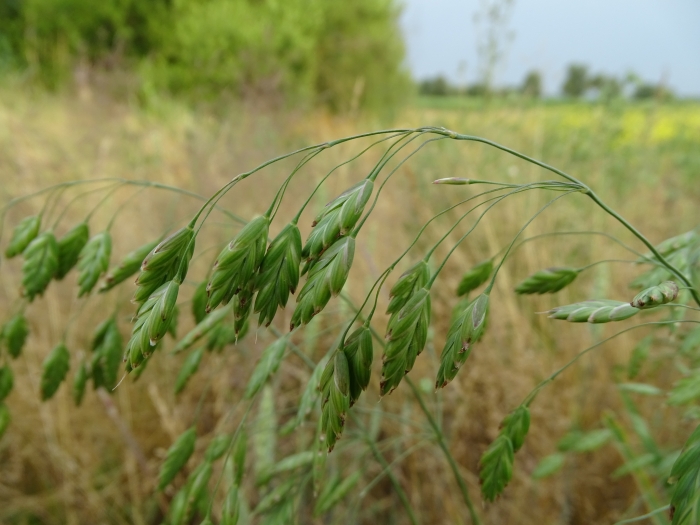Rye Brome
(Bromus secalinus)
Rye Brome (Bromus secalinus)
/
/

© Grzegorz Grzejszczak
CC BY-SA 4.0
Image By:
© Grzegorz Grzejszczak
Recorded By:
Copyright:
CC BY-SA 4.0
Copyright Notice:
Photo by: © Grzegorz Grzejszczak | License Type: CC BY-SA 4.0 | License URL: http://creativecommons.org/licenses/by-sa/4.0/ | Uploader: grzegorz_grzejszczak | Publisher: iNaturalist |

























Estimated Native Range
Summary
Bromus secalinus, commonly known as rye brome, is an annual grass that is native to Eurasia but has been introduced to many other regions, including North America, where it is often considered a noxious weed. It typically grows to a height of 0-4 feet and features smooth upper sheaths with slightly pubescent lower sheaths. The plant has an open, upright form and produces a seed head that is typically a nodding spike, with each spikelet containing several flowers.
Rye brome is not typically cultivated due to its invasive nature and its classification as a weed in many areas. However, it can be found in disturbed sites, roadsides, and cultivated fields, where it competes with crops and native plants. It prefers full sun to part shade and can grow in a variety of soil types, though it thrives in well-drained soils. In areas where it is not invasive, it may be used for erosion control due to its rapid growth and ability to establish quickly. Gardeners should be cautious, as it can spread aggressively and become difficult to control.CC BY-SA 4.0
Rye brome is not typically cultivated due to its invasive nature and its classification as a weed in many areas. However, it can be found in disturbed sites, roadsides, and cultivated fields, where it competes with crops and native plants. It prefers full sun to part shade and can grow in a variety of soil types, though it thrives in well-drained soils. In areas where it is not invasive, it may be used for erosion control due to its rapid growth and ability to establish quickly. Gardeners should be cautious, as it can spread aggressively and become difficult to control.CC BY-SA 4.0
Plant Description
- Plant Type: Grass
- Height: 1.5-3 feet
- Width: 1-2 feet
- Growth Rate: Rapid
- Flower Color: N/A
- Flowering Season: Spring, Summer
- Leaf Retention:
Growth Requirements
- Sun: Full Sun, Part Shade
- Water: Medium
- Drainage: Medium, Fast
Common Uses
Erosion Control, Low Maintenance
Natural Habitat
Native to Eurasia and found in disturbed sites, roadsides, and cultivated fields
Other Names
Common Names: Rye Brome, Chess, Cheatgrass
Scientific Names: , Bromus secalinus, Avena secalina, Bromus badensis, Bromus brevisetus, Bromus ehrhartii, Bromus ehrhartii, Bromus elongatus, Bromus hordeaceus, Bromus hybridus
GBIF Accepted Name: